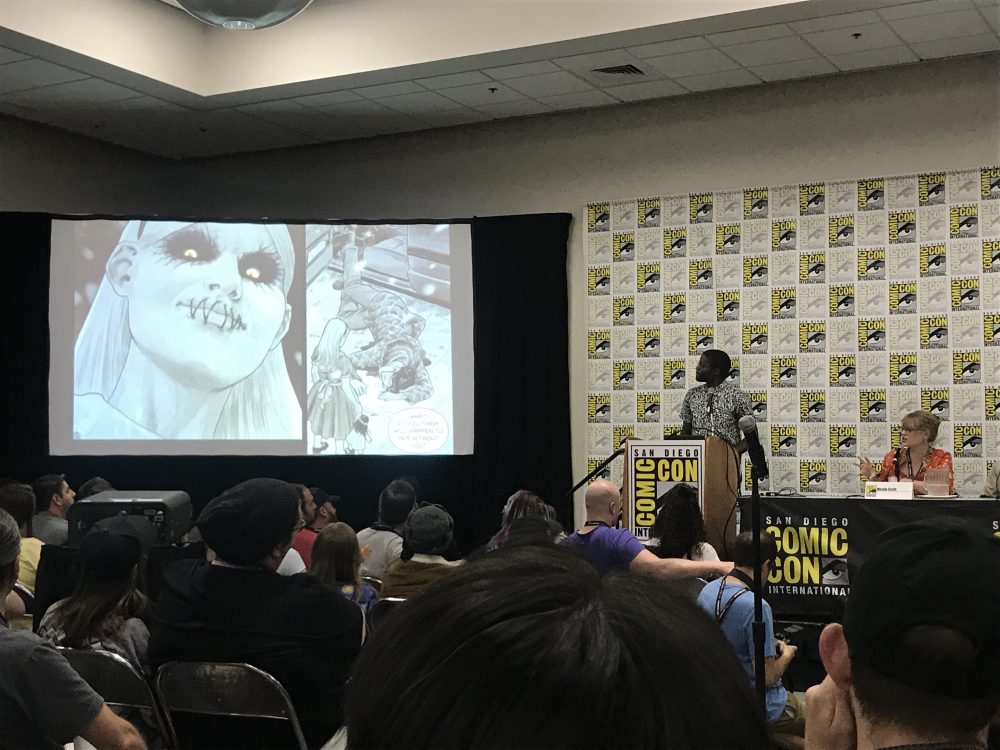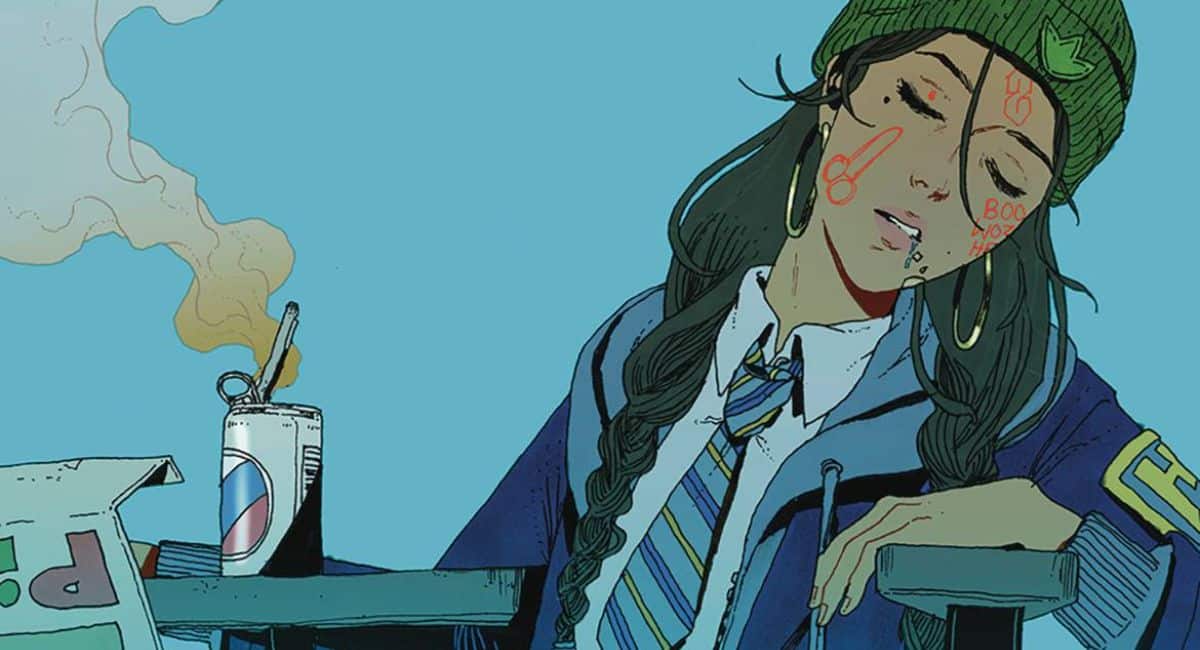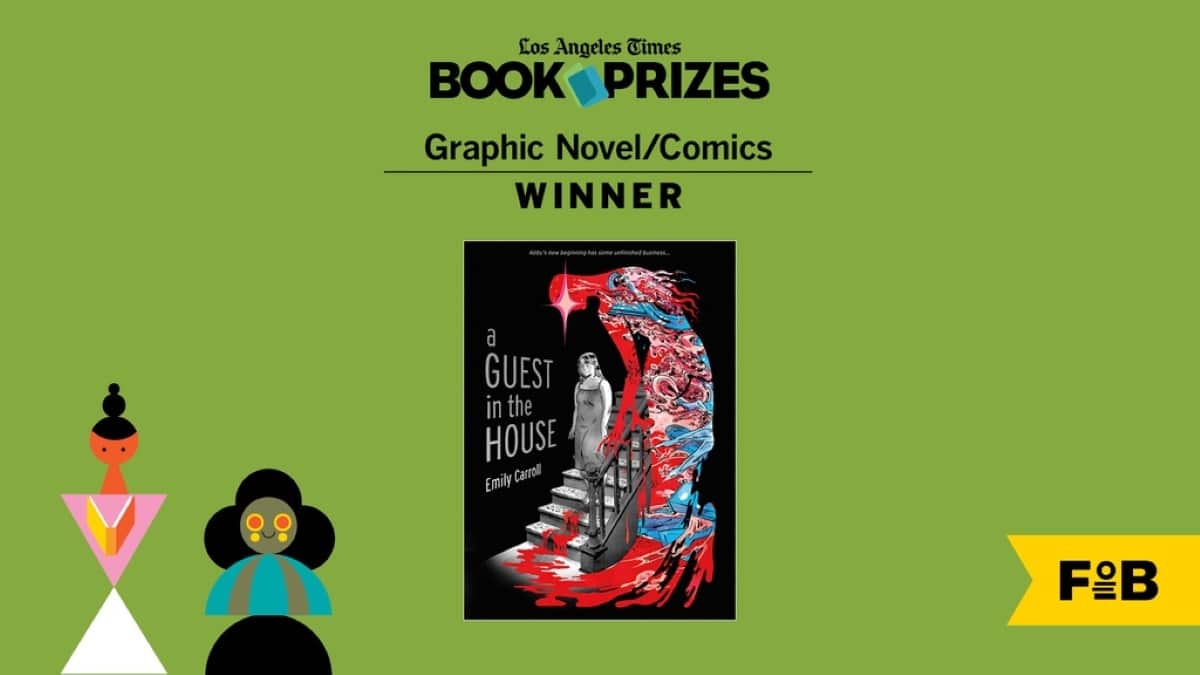
This year’s Image panel offered a laid-back opportunity to check in with several popular creators, who provided insight and anecdotes surrounding both current and upcoming projects.
Brenden Fletcher revealed the first cover for his Miyazaki-influenced ISOLA, with art by Karl Kerschl. Originally announced at Image Expo, Fletcher has been featuring small bits of the story in the back of Motor Crush which will lead into the first issue. Motor Crush itself returns in September in the form of a flashback issue, drawn entirely by Cameron Stewart and colored by Babs Tarr. Since Tarr usually re-draws Stewart’s laid-out pages, the shift in style for this single episode should lend nicely to the dreamlike quality that often accompanies a flashback sequence.
Donny Cates has multiple full plates and touched on three different titles over the course of the hour, including God Country, a 6-issue book now collected in trade, and Redneck, the story of a vampire family from east Texas. Cates observed that his recent work has focused heavily on family as a direct result of major health problems he suffered after turning 30. He also introduced his newest collaborator – also his tattoo artist – Ian Bederman. Brederman brainstormed and is working with him on the upcoming Atomahawk.
Parallel to his current Iceman run for Marvel, Sina Grace is also putting out a deeply personal book called Nothing Lasts Forever, which he described as “the vein cut open and the blood on the page”. The book is rough and ugly, mirroring life and giving it a very intimate feel. Not only did Grace letter the pages in his own handwriting, he also left small details visible, like names messily erased and overwritten.
Nicola Scott talked process on witchy crime noir Black Magick (Greg Rucka), notably the way she works traditionally with paper and ink and aims for a specific tactile feel. Although primarily a black and white comic, the team does utilize splashes of color to “show” magic, adding a layer of insight seen by readers but not necessarily by other characters within the story.
Tini Howard – though claiming she was only onstage as Sina’s cheerleader – discussed co-writing Magdalena with Ryan Cady and how excited she was to tell a rare tale of female mentorship. The book’s treatment of Patience when introducing a new Magdalena was also important to Howard. She points out that women aren’t often allowed to age in comics – they’re thrown out, and if they do return it’s in the role of a grandmother or matron. She highlighted Christian Dibari’s art and how the departure from Top Cow’s “shiny, pretty” house style fit the demon-infested horror visual they were after.
Wrapping up on this note, the creators agreed on a running Image theme of trusting your collaborators. Creator-owned comics more often offer the possibility of working with friends, and this level of trust shows in the resulting work.







